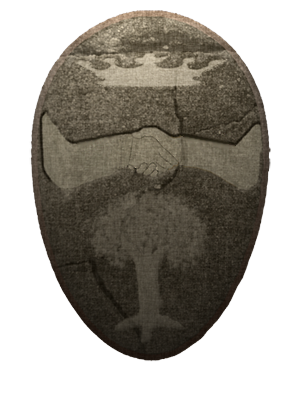Persian Tile (Qajar Period 1779-1925)
Rectangular underglaze tiles were commonly made in nineteenth-century Iran to decorate the upper borders of architectural interiors in a continuous frieze. Production of these tiles was centered mainly in the Qajar capital of Tehran. The underglaze technique of painting, applied on either a flat surface or molded in relief, facilitated the creation of scenes reminiscent of painting on paper and constitutes one of the distinguishing characteristics of Qajar tilework. In this tile, a young man on horseback is depicted against a lush landscape background. He is shown extending his hand toward a large bird hovering over his head. The bird with its long, graceful feathered tail represents Huma, a fabulous bird from ancient Persian mythology. Huma is the embodiment of health and strength, and is known for providing aid in defeating enemies. It was believed that only persons of royal status fell under the shadow of Huma. Thus the horseman depicted in some of the tiles is probably a prince, indicating a royal residence as the site from which this tile may have originated.









